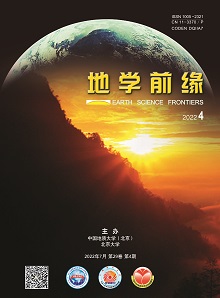In order to understand the main types of deep-seated thermal fluid in the Yinggehai Basin, We studied the thermal fluid characteristics, determined the range of thermal fluid activity, and analyzed the thermal fluid influence on reservoir diagenesis and pore evolution. Combined with previous research results, we investigated the Miocene Huangliu Formation reservoir in the LDX area by blue epoxy resin-impregnated thin section, scanning electron microscope, clay mineral quantification by XRD, physical property, electron probe, fluid inclusion homogenization temperature, and stable isotope analyses. Results showed that the deep-seated thermal fluid activity—which is affected by tectonic thermal events, controlled by an abyssal fault, driven by overpressure, and dominated by CO2 thermal fluid and to a lesser extent by H2S thermal fluid—mainly influenced the middle and lower parts of the Huangliu Formation below 3900 m. The reservoir is characterized by the accelerated transformation of authigenic clay minerals, vitrinite reflectance mutation, reduced formation water salinity, inclusion homogenization temperature above the normal formation maximum temperature, and hydrothermal mineral development under the influence of deep therrmal fluids. The Huangliu Formation involves two types of reservoirs: overpressure reservoir (middle-upper parts of the Huangliu Formation) and thermal overpressure reservoir (lower-middle parts of the Huangliu Formation). The diagenetic stage of the overpressure reservoir reached substage A2 of mesodiagenesis, with relatively weak compaction, weak dissolution and strong cementation, and experienced pore evolution in three stages: porosity decrease by compaction, porosity decrease by compaction and cementation, and porosity decrease by cementation combined with porosity increase by organic acid dissolution. Overall, porosity decreased from 38.8% to 7.6%. The diagenetic stage in the thermal overpressure reservoir reached stage B of mesodiagenesis, with relatively strong compaction, strong dissolution and weak cementation, and experienced pore evolution in four stages: stages 1-3 are the same as in substage A2, and stage 4 is similar to stage 3 except the porosity increase is caused by both organic acid and inorganic acid dissolutions. Overall, porosity decreased from 38.1% to 9.2%. Favorable reservoirs mainly develope in the thermal overpressure reservoirs of the second member of the lower-middle parts of the Huangliu Formation.

